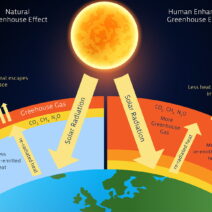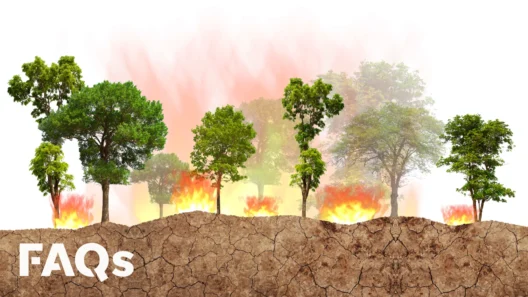The intricate tapestry of ecosystems across our planet is under unprecedented threat due to climate change. As temperatures rise, habitats are altered, and species face existential crises. Animal populations, already precariously balanced, are now pushed to the brink, experiencing transformations that ripple through the fabric of biodiversity. This article delves into the multifaceted ways climate change affects wildlife worldwide, highlighting specific species and ecosystems while elucidating the broader implications.
Firstly, it is paramount to recognize that climate change disrupts habitats. Alterations in temperature and precipitation patterns can lead to habitat loss. Forests, wetlands, and coral reefs—the keystones of various ecosystems—are increasingly vulnerable. As these vital environments decline, the inhabitants that depend on them face significant challenges. Polar bears, for instance, exemplify this plight. With the Arctic ice melting at alarming rates, their hunting grounds diminish, leading to malnutrition and declining populations. A poignant image of an emaciated polar bear has become emblematic of this crisis, illustrating the harsh reality faced by these majestic creatures.
In addition to habitat loss, climate change precipitates the phenomenon known as phenological shifts. These shifts manifest as alterations in the timing of biological events, such as breeding and migration. Birds, which rely on particular climate conditions for nesting, have started to change their migratory patterns, often arriving at their seasonal destinations either too early or too late. This mismatch can result in devastating consequences, such as decreased food availability during critical life stages. As a result, avian populations are in decline globally, affecting everything from local ecosystems to agricultural systems reliant on bird population control of pests.
Another profound impact of climate change is the increased frequency and severity of extreme weather events. Hurricanes, floods, and droughts not only devastate human communities but also disrupt wildlife. Hurricanes can obliterate nesting sites for sea turtles, which lay their eggs on coastal beaches. The ensuing erosion and destruction of these habitats lead to decreased hatchling survival rates. Similarly, droughts can diminish the availability of water sources, forcing terrestrial animals to travel greater distances for sustenance, which increases their exposure to predation and human-animal conflict.
Furthermore, climate change has the capacity to induce shifting distributions of species. As temperatures warm, many species are compelled to adapt, migrate, or potentially face extinction. For instance, marine life is migrating towards cooler waters in response to rising ocean temperatures. This phenomenon not only affects individual species but also leads to shifts in marine ecosystems, altering food chains and disrupting human industries such as fisheries. The delicate balance of the oceanic environment is compromised, resulting in broader ecological ramifications.
One cannot overlook the role of climate change in exacerbating existing threats to wildlife. Habitat fragmentation, pollution, and overexploitation are further intensified in a changing climate. For instance, invasive species, often facilitated by human activities, can thrive in disturbed environments created by climate change. These invasive organisms can outcompete native species, leading to biodiversity loss and ecosystem imbalances. In freshwater systems, invasive plants and animals can encroach upon native habitats, threatening endemic species with extinction as resources become scarce.
Moreover, the impact of climate change is not uniform across the globe. Vulnerable species, particularly those with restricted ranges or specific habitat requirements, are at heightened risk. Amphibians are particularly susceptible to changing climates, with many species already facing extinction due to habitat loss, pollution, and the introduction of pathogens. The ongoing loss of amphibian populations serves as a stark indicator of ecosystem decline, as these animals are critical bioindicators of environmental health.
The conservation implications are profound, necessitating a multifaceted approach to protect wildlife in the face of climate change. Conservationists advocate for the establishment of wildlife corridors to facilitate movement between fragmented habitats. Such measures can provide animals with the means to adapt to shifting environments and preserve genetic diversity. Furthermore, habitat restoration efforts are essential, enabling ecosystems to recover and maintain their ecological functions.
Public awareness and education regarding these issues is indispensable. Organizations are increasingly focused on disseminating information about endangered species and the ecological roles they play. The plight of the polar bear, for instance, has captured global attention, symbolizing the broader animal crisis precipitated by climate change. Advocacy for comprehensive climate policies that mitigate greenhouse gas emissions is crucial, as the preservation of wildlife relies on broader environmental sustainability.
Ultimately, the stabilization of ecosystems and the protection of wildlife must be prioritized in environmental agendas. The cascading effects of climate change stretch beyond individual species, affecting interconnections within food webs and the overall health of our planet. The survival of countless species hangs in the balance, underscoring the urgency of immediate action to combat climate change. As stewards of this planet, it is our responsibility to ensure that future generations inherit a world teeming with diversity and resilience.


